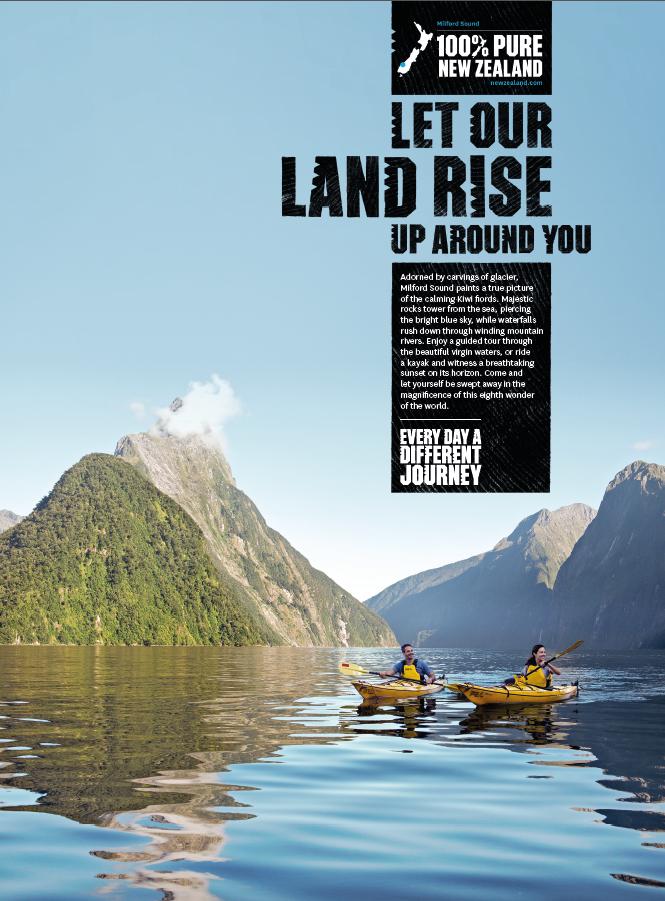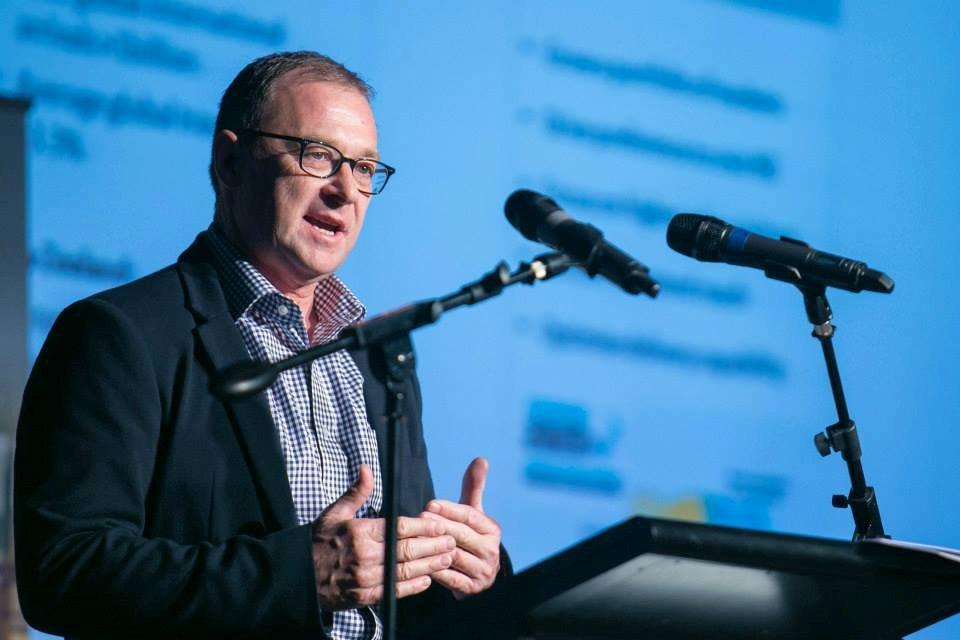Few destination branding professionals who don’t know about and admire the ‘100% Pure New Zealand’ slogan and campaign. Meet Kevin Bowler, CEO of Tourism New Zealand, the organization in charge of promoting the country as tourist destination.
Learn about:
- The main difference between marketing a destination vs a product;
- How New Zealand’s destination branding is influenced by wider government strategies;
- New Zealand’s main challenges on the destination branding front;
- How New Zealand measures the success of its destination branding campaigns;
- How the 100% Pure New Zealand storytelling has changed over the years;
- Why the 100% Pure New Zealand campaign has become so successful.
Kevin, you started your marketing career in consumer goods, then moved to tourism in 2010 – what got you interested?
My interest has always been in marketing, and consumer behaviour. International visitors represent New Zealand’s second largest export, behind dairy, and our largest services export, so the attraction was to lead an organisation responsible for growing this important part of our national economy. With the Prime Minister also the Minister of Tourism, the sector has a high profile and a lot of executive focus.
Are there any significant differences between the marketing of products or places, such as destinations?
The big difference between marketing a destination vs a product is end to end control. In consumer goods the marketer has a much higher level of control over the product, the distribution, and the price of a brand.
The difference between destination marketing and services marketing is less pronounced as service delivery is a big driver of brand for the consumer, and the marketer has an influence, but not always a lot of control.
New Zealand’s 100% Pure branding is no doubt one of the longest-running and commercially most successful destination branding and marketing campaigns worldwide. Why has it become such a success?
Two things mark the success for 100% Pure New Zealand over the past 15 years. First is the quality of the line itself. It allows us to leverage a range of messages into campaign work while always reinforcing the beauty of New Zealand’s landscapes. The second reason is simply consistency over time.
In recent years, media and academics have expressed concerns about a growing gap between the 100% Pure brand promise and New Zealand’s lagging environmental performance. As a destination marketer, how much room do you have to proactively deal with such a situation and ensure authenticity and credibility of the branding?
Firstly, let me deal with the notion that anywhere is literally 100% Pure. This is obviously nonsense. Nowhere, and arguably few things, are 100% Pure.
We always use the phrase ‘100% Pure New Zealand’ in all of our promotional work. What you are seeing in the images we produce is 100% Pure New Zealand. That might be beautiful scenery, a group of friends at a barbeque, jet boating on a shallow river, or a group visiting a New Zealand winery. It will be a 100% Pure New Zealand place and experience.
Care and protection of our environment is part of that story. We know that beautiful landscapes and scenery are the most compelling thing international visitors are attracted to when they consider New Zealand. As a consequence, Tourism New Zealand works alongside many entities in New Zealand who play a key role in care of the environment; for example the Department of Conservation (DOC) who has in its custody a third of New Zealand’s land area.
Tourism New Zealand is also a shareholder in Qualmark, the organisation that provides quality assessments and issues Enviro awards to our most sustainably run tourism businesses.
Tourism New Zealand monitors and reports on visitors’ views and attitudes towards New Zealand’s environment, helping keep the customers’ voice heard among policy makers. And interestingly, we’re recording both high and improving levels of satisfaction from visitors.
Doug Lansky in a recent TED talk called for DMO’s to become less marketing and more destination management focused – do you agree?
I think there’s a case for destinations to have a focus on all aspects of marketing, including destination management. But it is also important to think about this question in relation to context. I ask our marketing team to clearly articulate the most important barriers to growth and demonstrate proof points around their hypothesis.
If the barriers are destination oriented, then that’s where the marketing focus should go; and if they’re solvable through promotion and information, then that is where the weight of effort ought to go.
For example, in New Zealand in 2010 we could see a large demand beginning to emerge from China and we knew our industry wasn’t prepared for the influx of a new type of visitor. Consequently, Tourism New Zealand invested considerable time and energy in developing resources and training for the industry to prepare it to serve these new customers.
In another example, we learned from our research that New Zealand was on a lot of prospective visitors’ ‘bucket lists’, but they just didn’t know enough about the destination to be convinced to make the decision to travel. The solution here was much more marketing communications led.
A country’s destination branding being the most visible part of its broader nation branding (incl. country-of-origin), to what extent do the actions of political and business leaders influence your work?
Our destination branding is definitely influenced by wider government strategies and priorities. Particularly this relates to parts of the world where there is a national interest in building relationships through trade of goods or wider exported services, such as export education.
We have a very close commercial relationship with Air New Zealand and work hard to keep our messaging and actions aligned to maximise benefits to both the national airline and the destination. Sometimes we’re influential on the airline’s decisions and sometimes we’re influenced by the airline’s priorities and commitments.
Currently we’re jointly shaping our efforts in Argentina and the US to allow for the fact that Air New Zealand is about to start non-stop services to Buenos Aires and Houston in December 2015.
Tourism New Zealand’s destination branding helps shape our political leaders’ comments, with the intention that the two things are complimentary and coherent.
Tourism New Zealand is one of the founding agencies that developed the New Zealand Story; an initiative designed to provide a wider, more comprehensive, impression of New Zealand’s contribution to global economies through products and services exports.
Whilst this is less visible than our tourism promotion, the Story tells a more fulsome narrative of what New Zealand can offer the world and provides a foundation for exporters across many sectors to build their brand and sector stories from.
Which aspect of managing the 100% Pure New Zealand destination brand do you find most challenging?
The challenge is to keep making the destination branding better, while being true to the original idea. Part of this is making it even more representative of the place itself and the other part is keeping it ahead of competitive destinations attempting to occupy the same ‘space’.
How has the 100% Pure New Zealand storytelling changed over the years?

The essence of the campaign has not changed much over the past fifteen years. But along the way we have introduced new elements or thoughts and we certainly deliver it through different channels.
In more recent expressions of the campaign there has been a much stronger impression of people and activities within the landscape; and far fewer empty landscapes.
We were able to use the 100% Pure New Zealand branding to associate New Zealand with ‘Middle-earth’ from 2011 to 2014, which was very successful in terms of increasing the value of visitors.
In 2015, our expression of the campaign has embraced New Zealand’s culture, both Māori and Pākehā, more overtly to create a unique visual identity. The 100% Pure New Zealand logo has been re-designed and carved from native timber using traditional Maori carving techniques, then re-produced with the wood-grain showing.
The 2015 campaign message is ‘every day a different journey’, which reinforces the idea of so much to see and do within a small, easy to travel place.
100% PURE NEW ZEALAND: EVERY DAY A DIFFERENT JOURNEY – TV Commercial
How do you measure the effectiveness and success of your destination branding?
Success is measured using multiple approaches. Overall, Tourism New Zealand’s purpose is to increase the value of international visitors to New Zealand. So the campaign has to play a role in achieving our purpose.
However, we accept that many things influence this outcome, so intermediate measures are captured and used through tracking studies in key markets. Intermediate measures include intention to travel to New Zealand and a range of destination brand attribute ratings.
We also pre-test our creative in priority markets to ensure we have messaging and motivation levels optimised. As most of our creative is delivered over responsive digital channels, we’re increasingly looking at exposures, interaction levels, and referral levels to travel sellers and operators as a measure of success.
Our measurement of joint campaigns with commercial partners has progressed a long way and we’re able to get a good idea of the return from specific campaign investments now.
Your favorite destination marketing or branding book right now?
I was influenced by Jennifer Aaker’s lecture on storytelling in business at the Stanford Graduate School of Business in 2013. Jennifer is an advocate of engaging an audience with stories which I think is at the heart of destination branding.
At Tourism New Zealand, our vision is to be the ‘World’s most authentic destination story tellers’. We’ve baked in the need for great destination storytelling to our culture.
Thank you, Kevin.
Connect with Kevin Bowler on LinkedIn.
Enjoyed our interview with Kevin Bowler of Tourism New Zealand on Destination Marketing Strategies and Challenges? Spread the word!


